London Loop Walk 11:
Banstead Downs to Kingston & The Thames
9 July 2006
Today Stephen did the eleventh of his London Loop walks, this time with George for company. After some slower progress,
today was time for the longest LOOP walk so far, and to complete the journey
around the southern part of London as we head for the Thames once more.
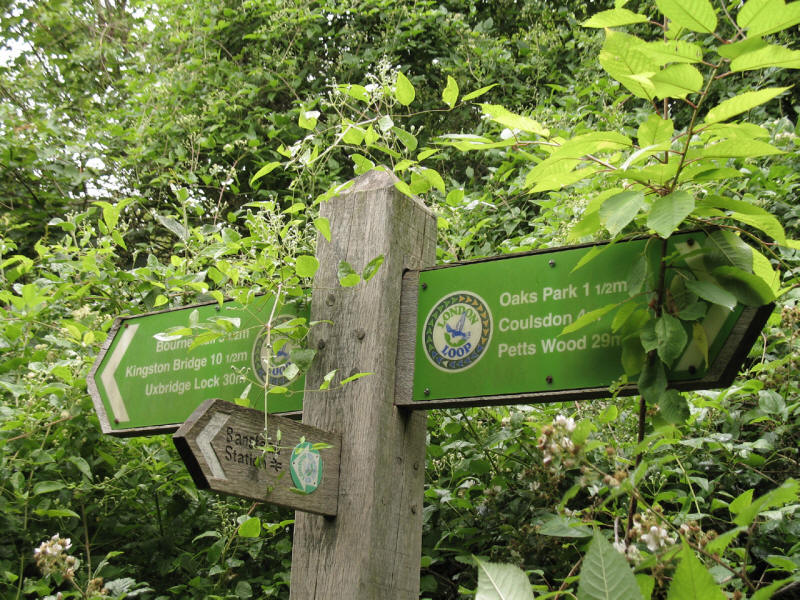
After retracing last time's LOOP Link walk through the dense undergrowth of
Banstead Downs golf course, with headroom less than a metre in places, we find
this signpost showing that we have reached the LOOP proper, and that the
official distance to Kingston Bridge is 10½ miles.
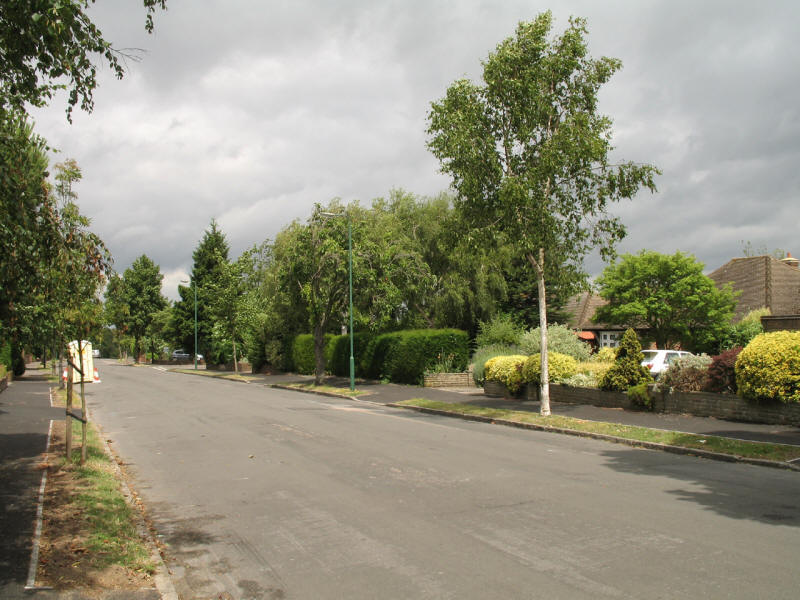
After the rest of Banstead Downs golf course, we emerge into suburban housing -
street after street, and only one person passed in all that time.
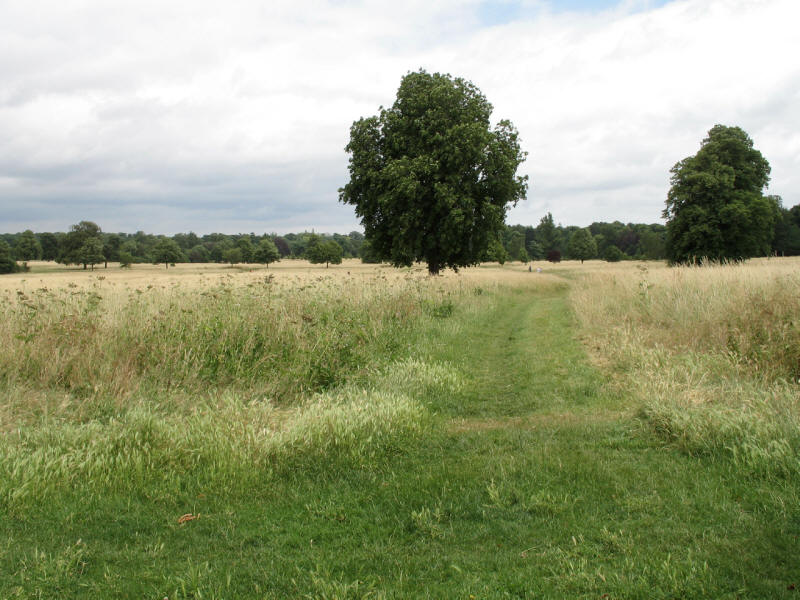
After passing under the railway line from Sutton to Epsom, we cross the open
space known as Warren Farm and then reach the grounds of Nonsuch Palace.
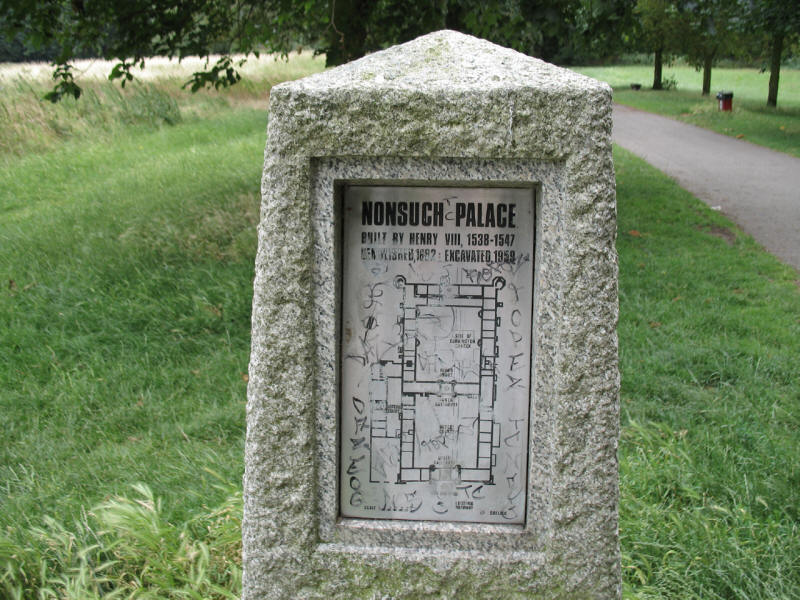
Constructed under the orders of Henry VIII, who demolished Cuddington village
including its church to have room for his palace, it was used extensively by
Elizabeth I, but demolished in 1652. This is one of three marker stones which
show where the palace was located.
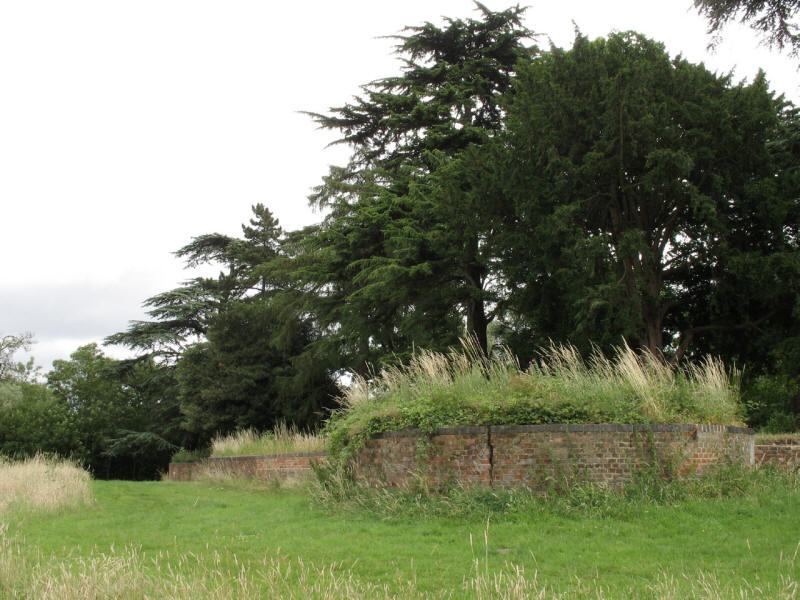
This odd construction, with low brick walls, is the site of the banqueting hall
of Nonsuch - presumably the outline reconstructed in brick at some past time.
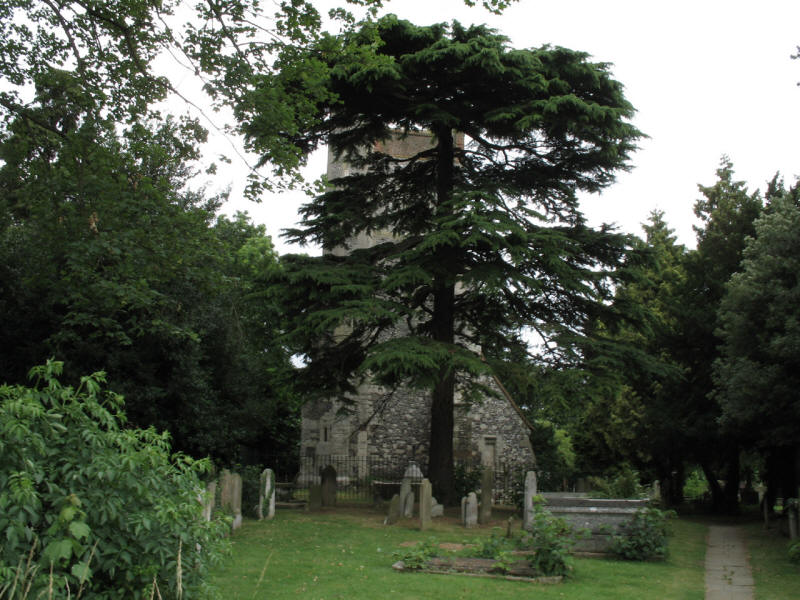
Safely negotiating the dual carriageway of the A24, we reach Church Street in
Ewell, where the tower of the parish church stands in its graveyard; the rest of
the church was demolished and replaced by another nearby.
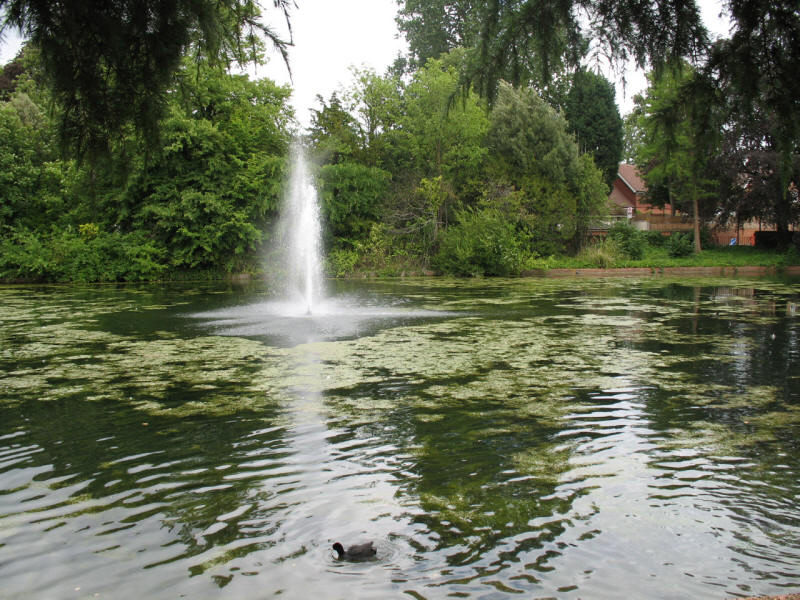
As we reach the end of stage 7 in Bourne Hall Park, it is time for lunch. The
spring that feeds this pool is one of the sources of the River Hogsmill, which
we will be following for the rest of the day.
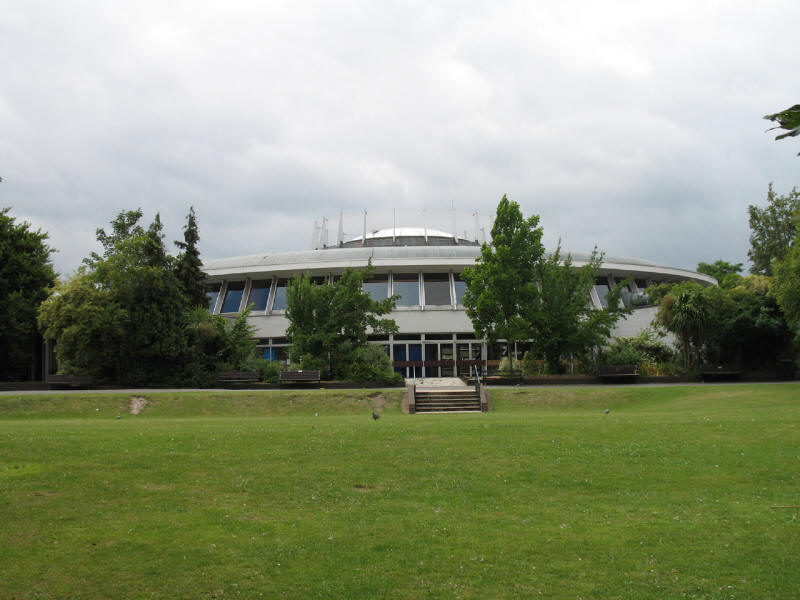
Looking the other way, this flying saucer of a building is the modern Bourne
Hall (the original having been demolished in the 1960s), housing a library,
museum and coffee bar.
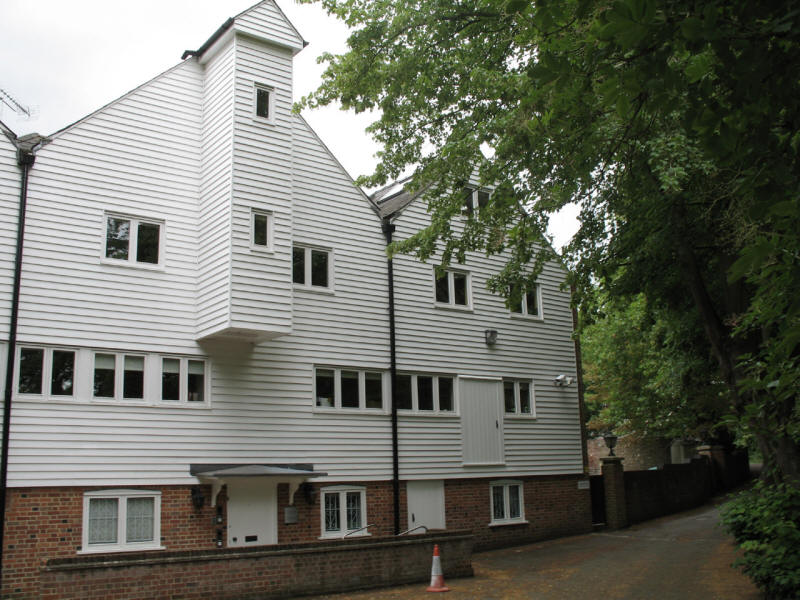
Fortified with lunch, we stride on along the Hogsmill, here finding Upper Mill,
the only survivor of the many mills (mainly gunpowder mills) that once lined the
Hogsmill.
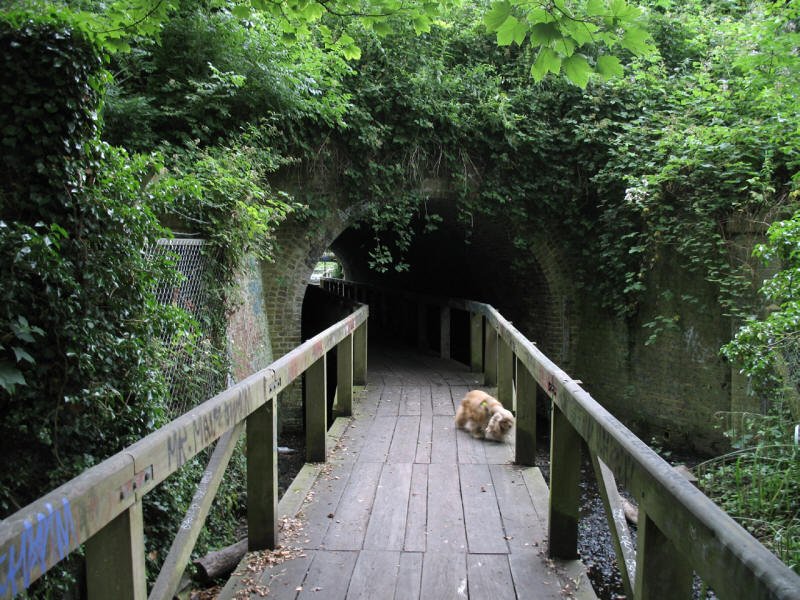
To get under the embankment of the railway from Epsom to Wimbledon, the path is
ingeniously carried above the Hogsmill on a wooden causeway.
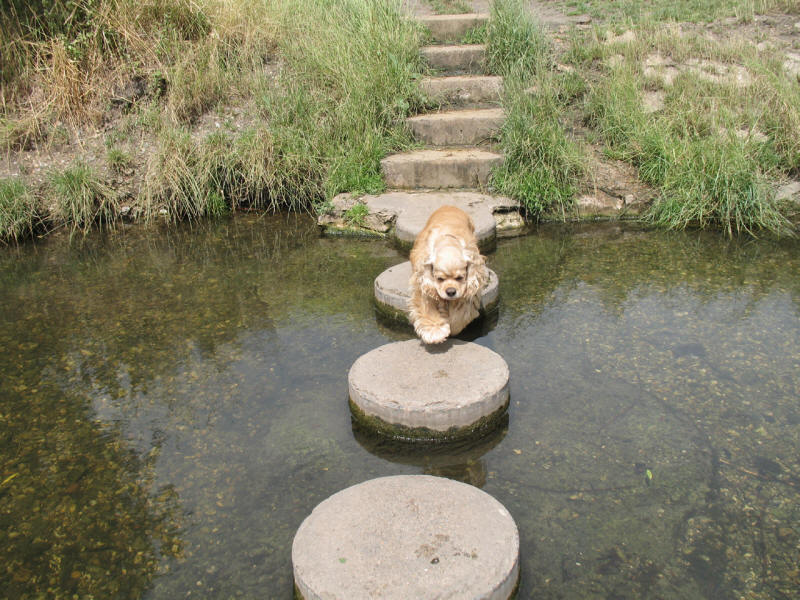
As we make our way along the Hogsmill river, never far from houses but just
keeping them at bay, George plays on the stepping stones.
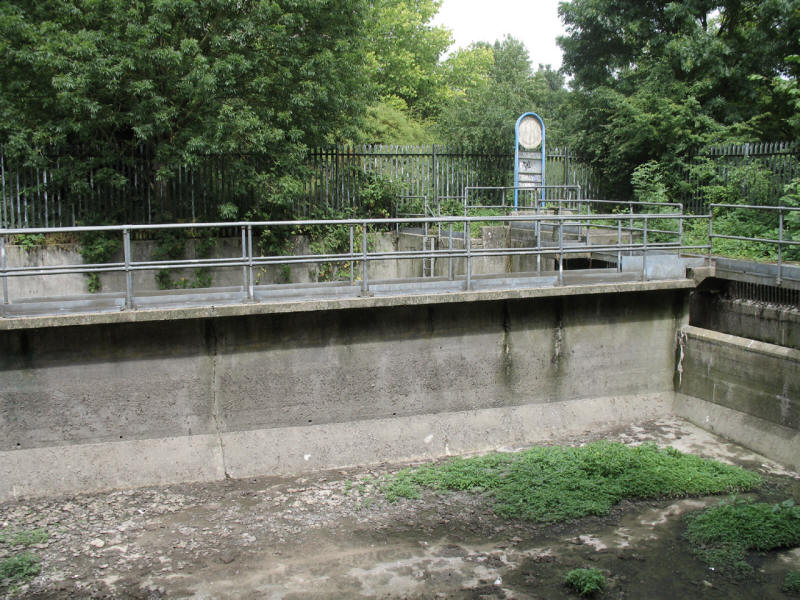
The river struggles to gain rural character, with interludes such as this small
sewage works
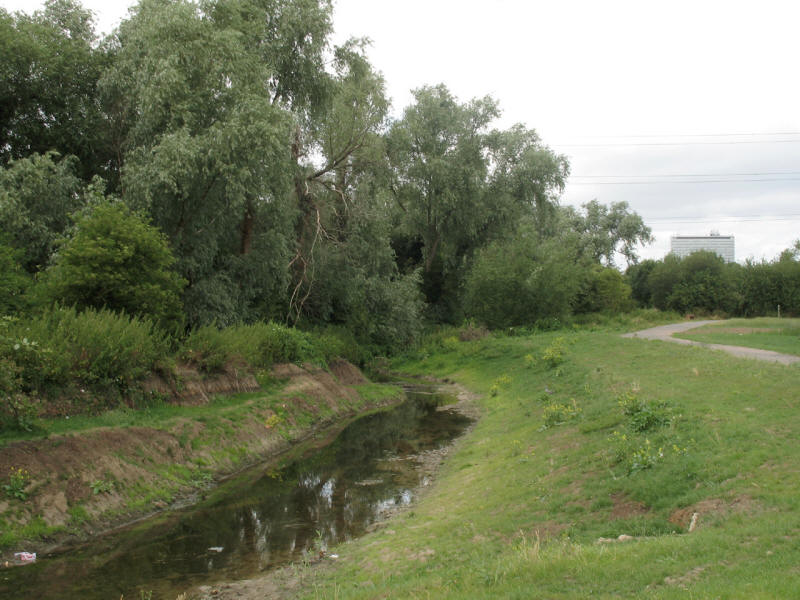
Tolworth Tower, a familiar landmark at the junction of the A3 and A240, towers
over the Hogsmill valley
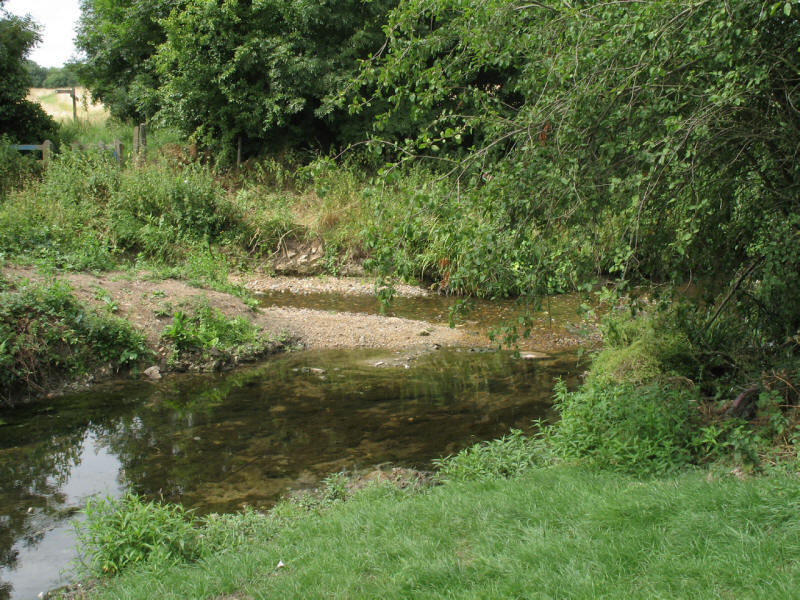
On the far side, Bonesgate Stream, the largest tributary, joins the Hogsmill.
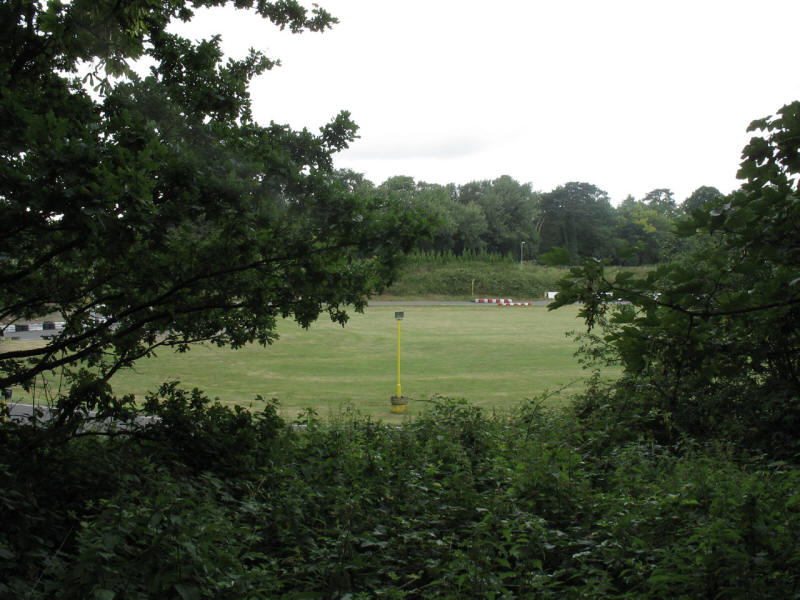
As we struggle along an overgrown permissive path, a glimpse through the trees
of a go-karting track
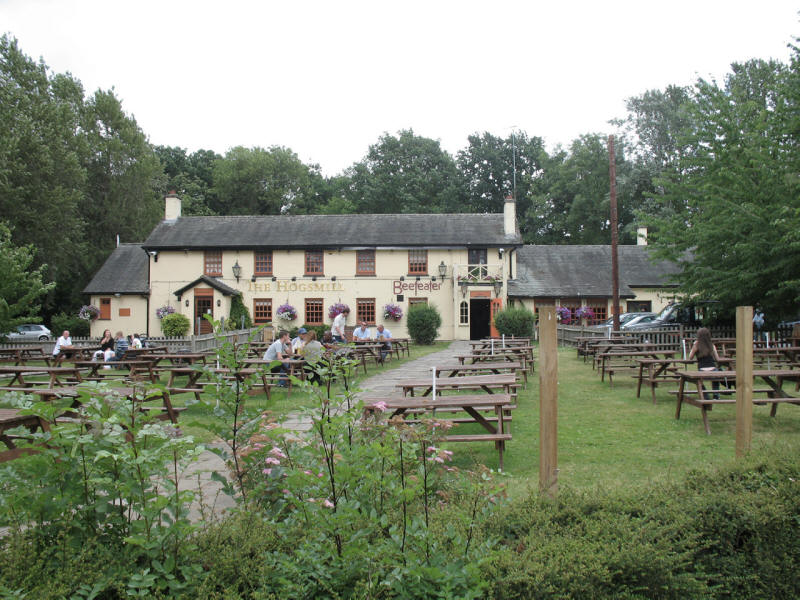
Emerging from the nettle-infested path, we must now take a diversion away from
the Hogsmill river, passing the Hogsmill pub and restaurant with its huge
garden, surprisingly underused on this warm and improving afternoon.
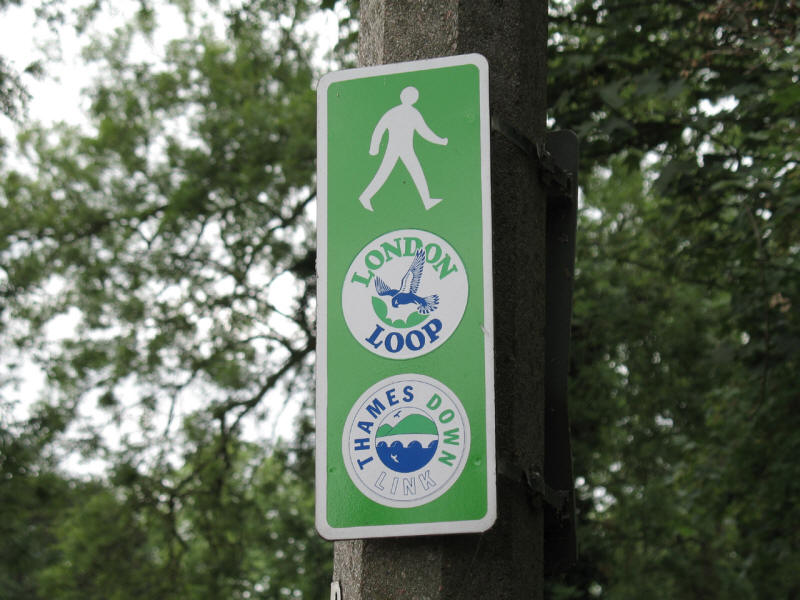
Since the joining of the Bonesgate Stream, in addition to the LOOP we have also
been following the Thames Down Link, a
24-km route linking the Thames Path and the North Downs Way.
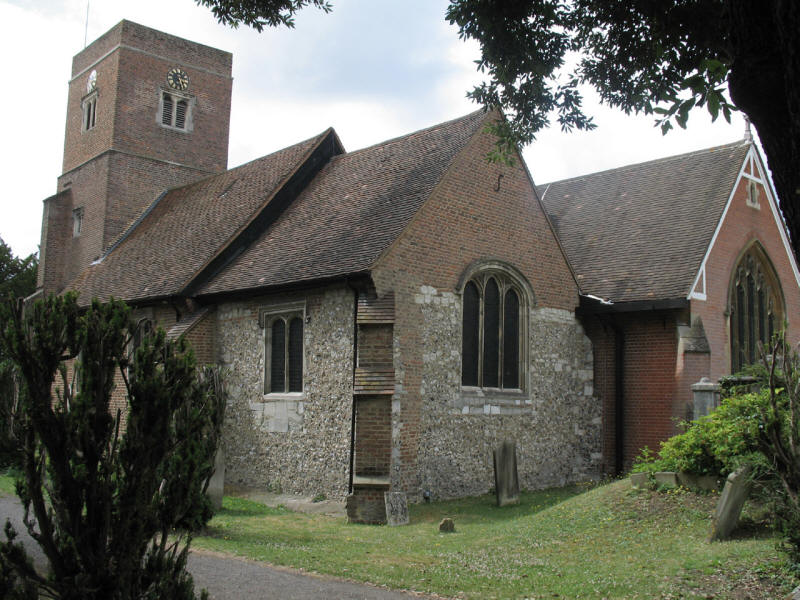
As we continue our diversion away from the river, we pass the church of St John
the Baptist in Old Malden, rather an odd mixture of periods.
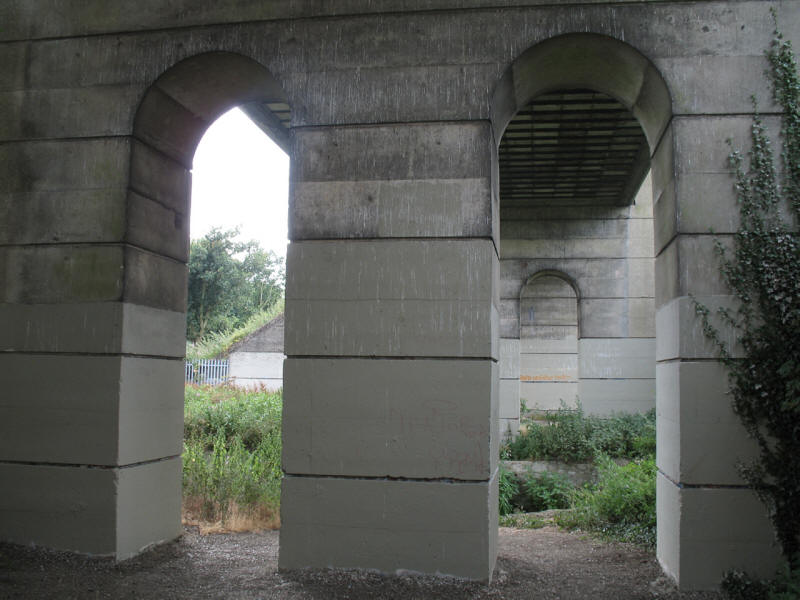
Now returned to the Hogsmill, we pass under the branch railway line to
Chessington, built in the 1930s. This impressive three-span concrete viaduct is
42 metres long, and was built as part of the last expansion of the Southern
Railway.
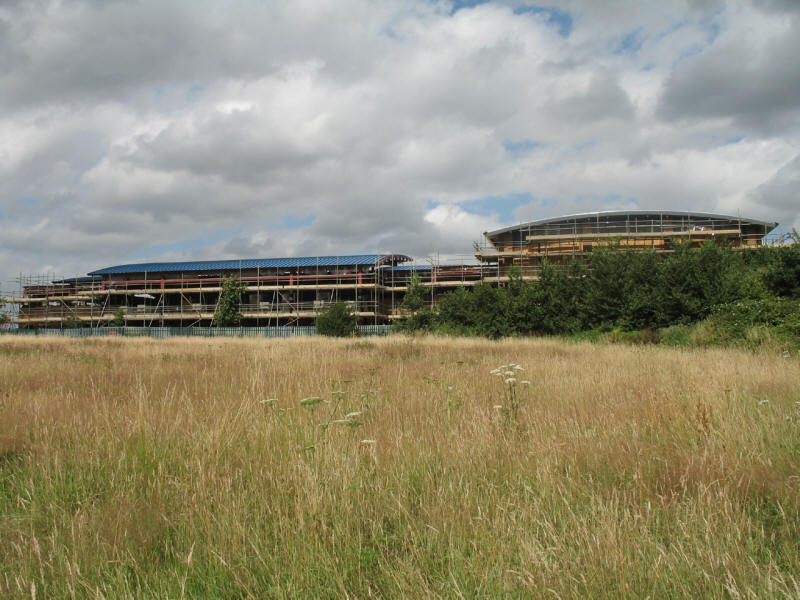
Extensive construction is underway - new buildings for the school, or something
else?
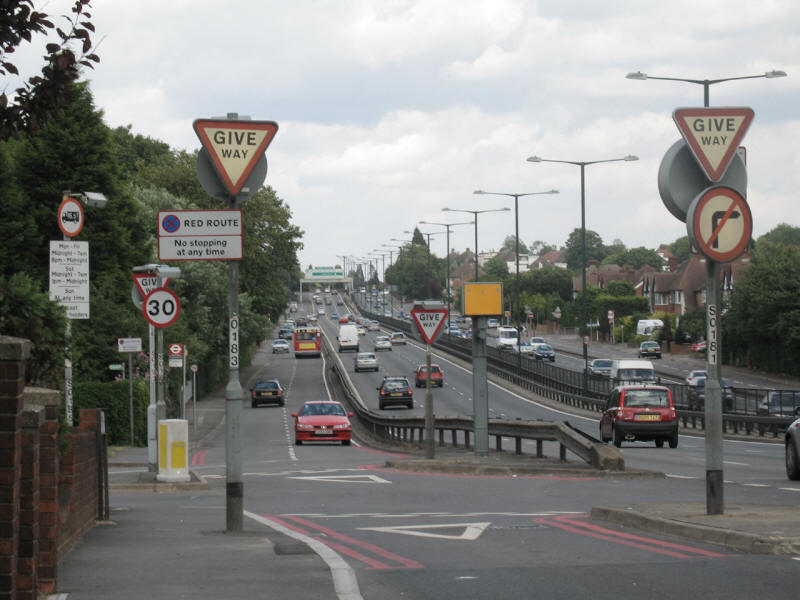
The next obstacle is the frighteningly busy A3, 10 lanes with its twin service
roads, fortunately with an underpass across the dual carriageway itself, but
with a few hundred metres along the carriageway on either side too.
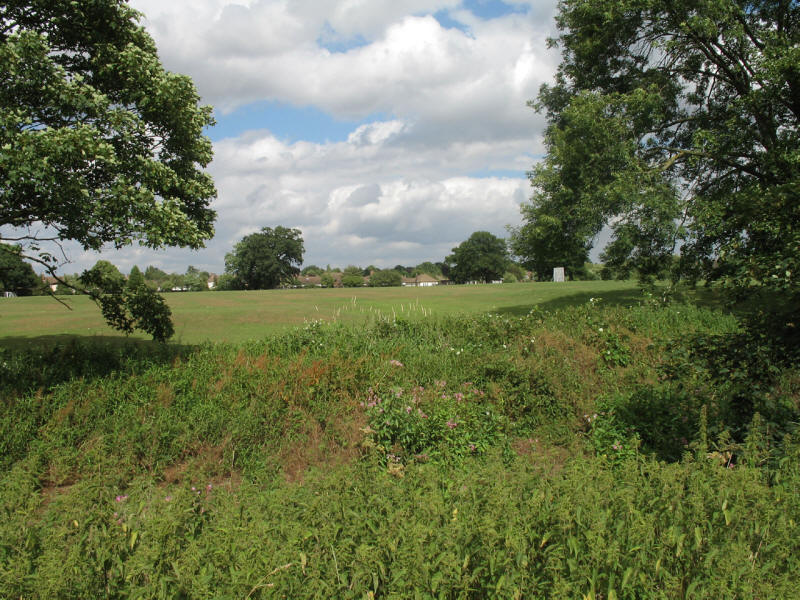
We then return to relative tranquillity, now looking across the Hogsmill to a
cricket ground
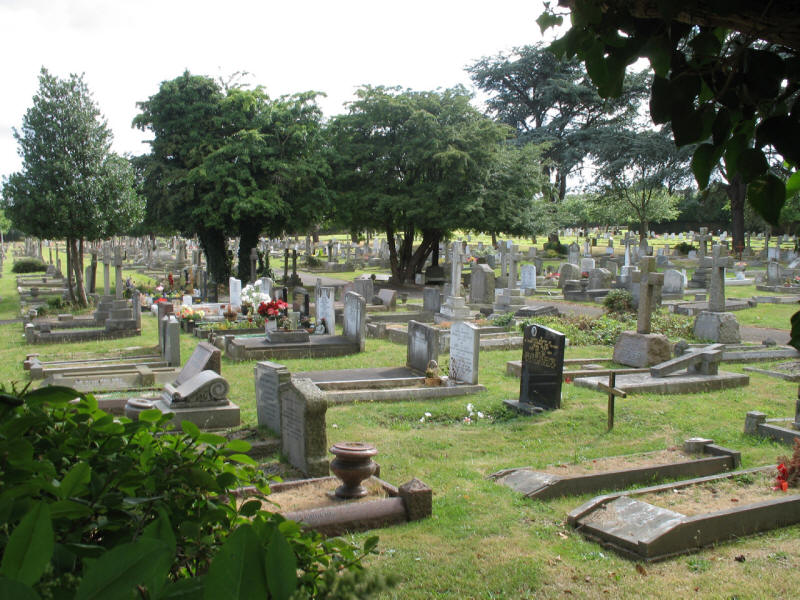
After passing next to (and being tempted by) Berrylands railway station, we then
make our way along national cycle route 75, with industry and more sewage works
on one side, and a cemetery on the other.
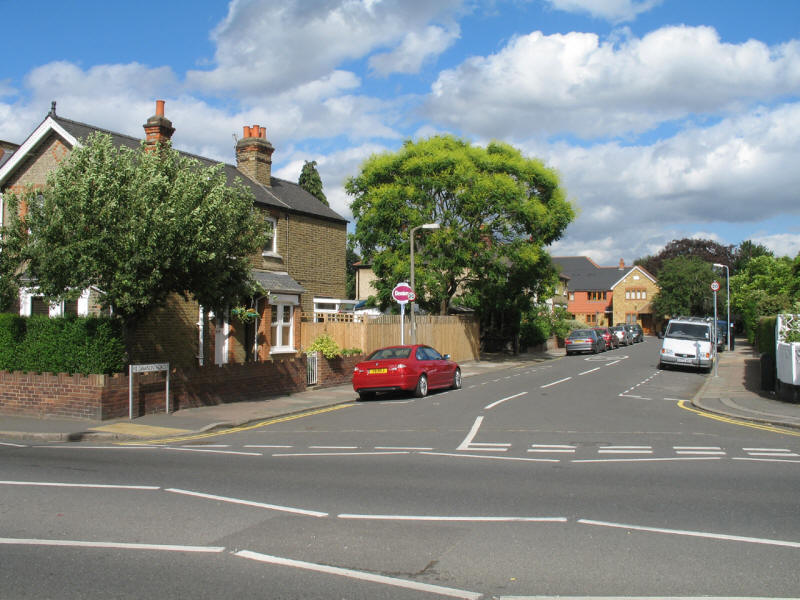
That presages the arrival of Kingston, with its Dawson Road
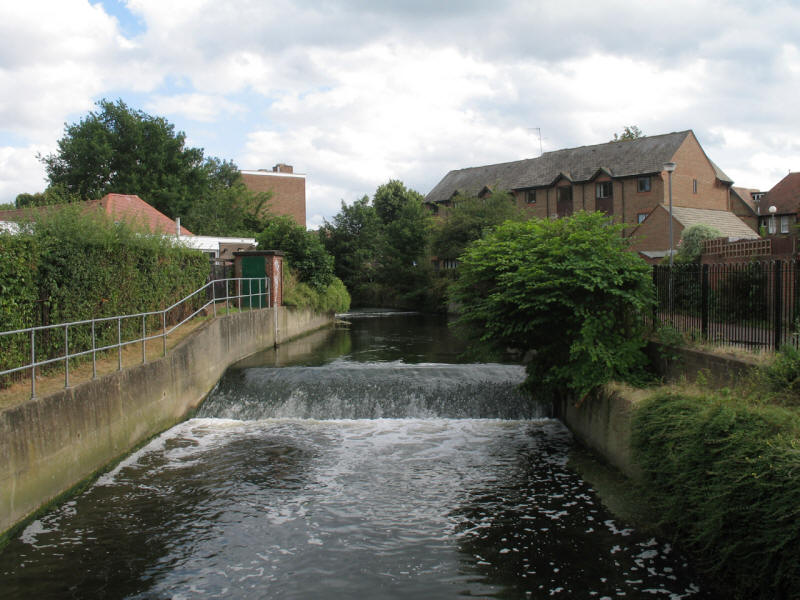
The LOOP and Thames Down Link continue to follow the Hogsmill where possible,
continuing to be hemmed in by concrete.
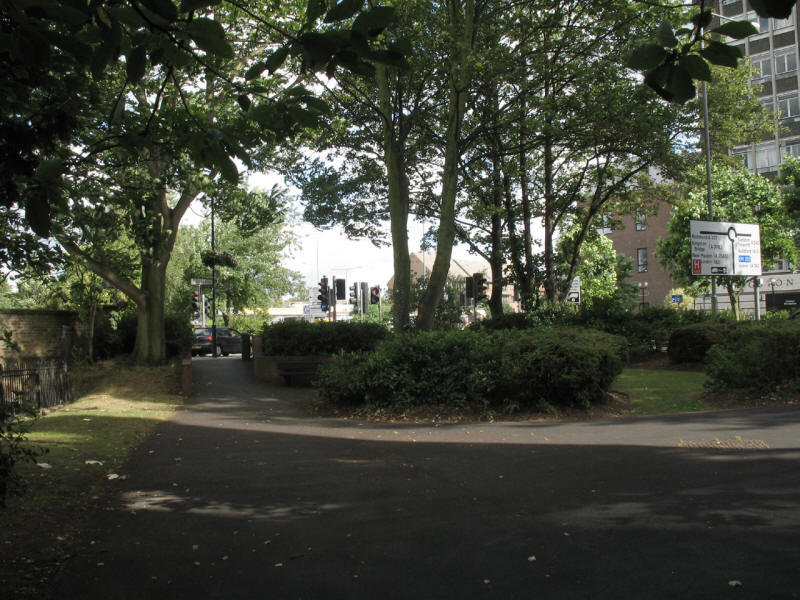
We start to get closer to the heart of Kingston, with a feel to the walk
reminiscent of Erith, for some reason! I wonder what proportion of the people
walking along this path have any idea they are on the LOOP or what it is.
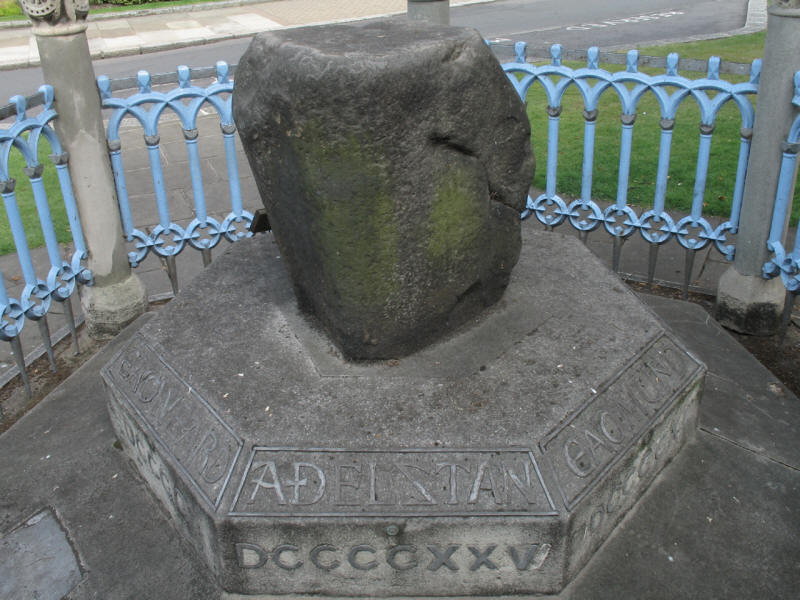
Having passed, along with the Hogsmill, under part of the Guildhall complex, we
find the Coronation Stone. It is said that seven Saxon kings from the year 900
were crowned on this stone.
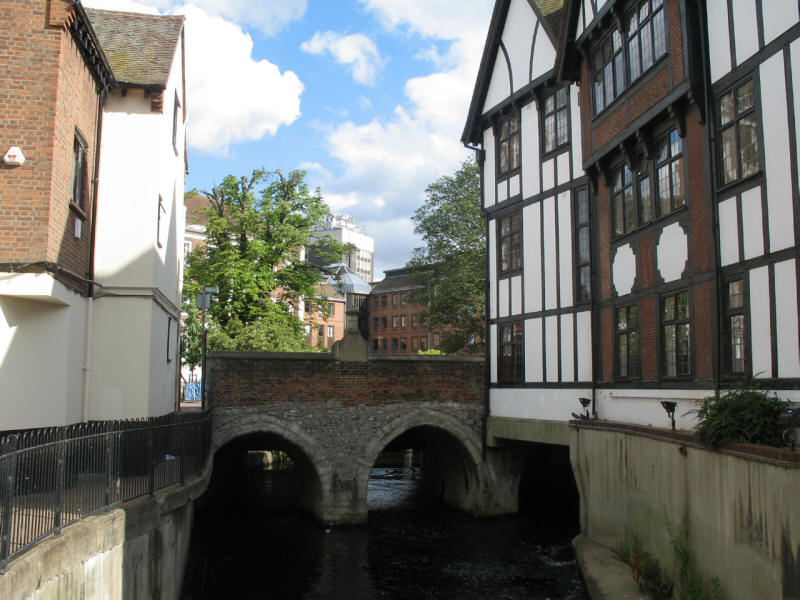
Crossing the High Street, we take the narrow path along the Hogsmill, and
looking back can see that the modern High Street with its modern traffic is
still carried on these three 13th-century arches of the Clattern Bridge (albeit
extended from the original 8-feet width) - a quite remarkable survival into the
modern age.
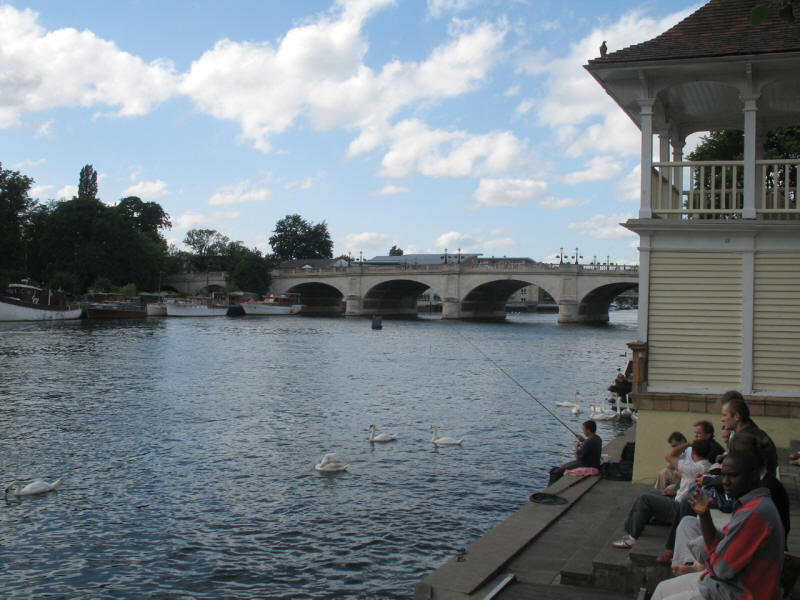
And here we are, at the Thames and Kingston Bridge, today's destination. It felt
very good to get here after an afternoon's walk from the North Downs.
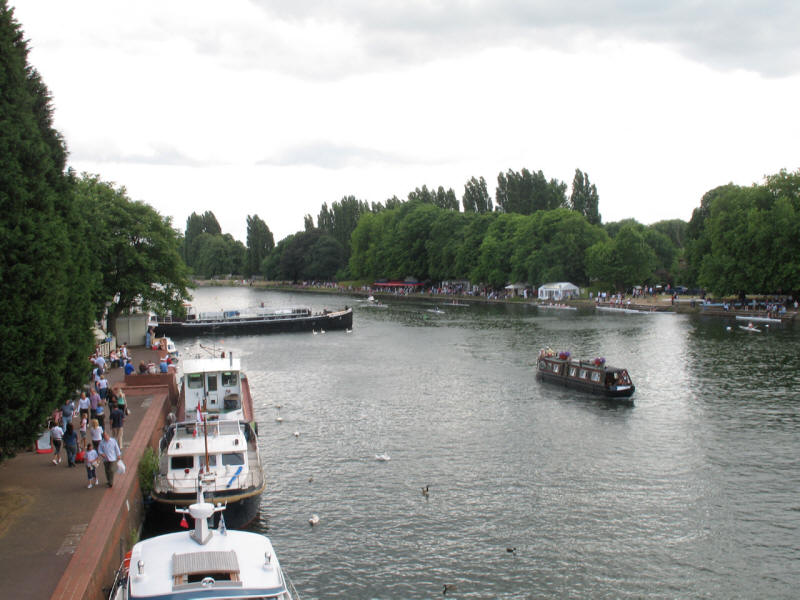
From Kingston Bridge, looking down on the Thames, site of a regatta today.
A good walk, by some margin the longest LOOP walk I've done so far, with a very satisfying end point. The following of the Hogsmill for
most of the afternoon, from source to its meeting with the Thames, additionally
gave the walk a sense of purpose. Next time, the
London Loop from
Kingston upon Thames to Hatton Cross
Section 7 Banstead Downs to Ewell: 6.7km, 1 hour 30 minutes
(including 15 minutes stopped), 34 metres of ascent.
Section 8 Ewell to Kingston: 12.5km, 3 hours 40 minutes (including 55 minutes
stopped), 71 metres of ascent.

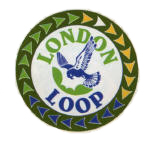

|